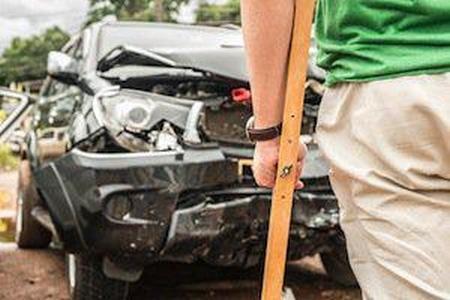Illinois Car Accidents: When Both Drivers Are at Fault
 Sometimes a car accident is caused by more than one driver’s mistake. When both drivers acted negligently and there is car crash, Illinois has special rules that deal with how damages are paid out. This is called comparative negligence. Sometimes, insurance companies try and use comparative negligence as a tool to pay out less for personal injury claims.
Sometimes a car accident is caused by more than one driver’s mistake. When both drivers acted negligently and there is car crash, Illinois has special rules that deal with how damages are paid out. This is called comparative negligence. Sometimes, insurance companies try and use comparative negligence as a tool to pay out less for personal injury claims.
How Comparative Negligence Works
Every state has its own comparative negligence laws. Illinois has what is called a modified comparative negligence law. Under this approach, drivers cannot collect damage unless they are less than 50 percent responsible for an accident. Any driver who has any portion of fault for an accident will have his or her damages reduced. The total amount of damages will be reduced according to the percentage of fault the driver had in the accident. Consider the following examples:
- Sue is 49 percent at fault for the accident. She can collect damages; however, the damages she collects will be reduced by 49 percent; or
- Bob is 50 percent at fault for an accident. He cannot collect damages for the accident.
Most cases are not determined down to the exact percentage. Most cases use round numbers like 20 percent or 50 percent.
Who Decides Who is at Fault?
Many cities and counties in Illinois require a law enforcement officer to come to the scene of every car accident. However, the reports those officers make do not often set out who is to blame for an accident and how much someone is at fault. Instead, the police reports describe the evidence the police found and list any citations they issued.
When a claim is opened with an insurance company, the insurance company will do their own assessment of fault. Their initial conclusion will be the basis for any offers they make to settle a case.
Lawyers can try and convince the insurance company the fault calculations are wrong. If a lawsuit is filed, it will ultimately be up to a judge or jury to decide who is at fault for the accident, what the damages should be, and how much those damages should be reduced, if any, because of the comparative negligence of the driver.
Comparative negligence cases are complicated and often require expert testimony and investigations to resolve.
If you have been injured in a car accident, you should consult with an experienced DuPage County personal injury lawyer to discuss your rights and possible claims. Call Mevorah & Giglio Law Offices today to schedule your free consultation at 630-932-9100.
Source:
http://ilga.gov/legislation/ilcs/fulltext.asp?DocName=073500050K2-1116
 English,
English,
 Spanish,
Spanish,
 Polish,
Polish,
 Urdu
Urdu













 Make a Payment
Make a Payment



